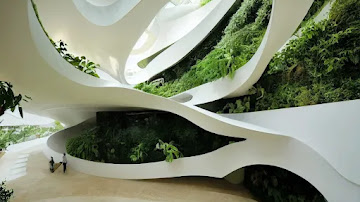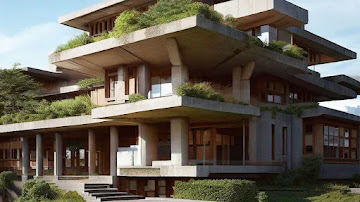It is indisputable that humanity continues to advance by leaps and bounds, alternatives to different materials that lack sustainability are increasingly being created to implement in the construction sector. Let's talk about translucent concrete and its chemical formula, a material that we all probably already know. If not, continue reading, I'm sure you'll learn something new.
A good
architectural project prevails over time, as do the materials that make it up.
If within your creative process, you are willing to use an ilum additive for
translucent concrete, it is an excellent option to apply as a lattice-like
coating on interior walls or even better on facades.
Learn more about: what is the concept of architecture?
What is translucent concrete?
This
conglomerate is a concept derived from “nano-optics” where optical fibers
transfer light across a surface from one end to the other. These fibers form
visibly shadow patterns on surfaces and are evenly dispersed in conjunction
with the cement.
History
This
cementitious derivative had its origin quite some time ago, part of the
background of translucent concrete is made up of a Canadian patent, which began
its development in 1935. Since then and with the arrival of fibers and
polymers, the rate of inventions on this material innovative is on the rise. In
the early 1990s, it began to be implemented in various prototypes, which
consisted of forming mosaics or thin layers of said material until the
necessary transparency was achieved.
Who was the
inventor of translucent concrete in Mexico? It had its indications in 2005, its
inventors Joel Sosa Gutiérrez and Sergio Omar Galván Cáceres completely changed
the paradigm of this material, their invention has lighter characteristics than
the cement known up to now and it is said that it can be poured under water. In
addition, due to its components, it does not lose luminescence even after 2
meters in thickness. Surprising, isn't it?
How is translucent concrete made?
This is not
possible to know unless we have the secret recipe of ilum in our hands,
however, some steps are known. There are different ways to create it. First is
the base, an ultra-fine grain cement of approximately 95% of the desired volume
and 5% light-conducting aggregates. After the mixture has set, it is cut into
plates or cubes, this will depend on the result that needs to be obtained.
How does it work?
Due to the
roughness of the translucent concrete-based surfaces and the curvatures in the
fibers, light transmission is lower than that of the environment, and the
longer these fibers have, the less light they can transmit. It is not difficult
to understand, this light that is perceived before the human eye seems to be
pleasant and its use as emitters of natural lighting is favorable.
Translucent concrete applications in construction
Translucent
concrete is used less frequently than normal concrete today, perhaps because of
the higher cost. However, it has been successfully used as a façade material in
various monuments and architectural buildings. Some works with translucent
concrete are:
- Shanghai Italian Pavilion / Giampaolo Imbrighi
- NINO Restaurant / Jassim Alshehab Architects
- Wahat Al Karama / MIRAL Architect
Fiber optic
translucent concrete blocks can be used for floors and paving, as well as for
stairs and desks, and furniture of any kind. Other than that, translucent
concrete is used in partitions, doors, panels, etc.
One of the
characteristics of translucent concrete is that it enhances the beauty of the
interior by illuminating the space during the day. It is also used to build
walkways and speed bumps that are illuminated at night to provide added safety
for pedestrians and roadside vehicles, as well as illuminate shady places or
windowless areas such as basements.
Advantages and disadvantages of translucent concrete
Due to the
analysis of translucent concrete, we can magnify that it provides spaces with
natural lighting, therefore, it is considered a suitable material to reduce
electricity consumption. It may be that shortly, it will serve as an ecological
substitute for ordinary concrete.
In addition
to its economic and environmental benefits, translucent polymer concrete
enhances the visual appeal of architecture and increases the overall aesthetic
value of a structure. Despite its many benefits, there are some restrictions
for its use in large-scale projects. Because optical fibers are an expensive
material, they are more expensive to produce.
Lack of
experience is another reason why translucent concrete in civil engineering
cannot fully replace regular concrete. The incorporation of optical fibers into
the concrete mix requires skilled labor, but few people are familiar with this
technology.
For cemex
translucent concrete to be a viable alternative, the inventors will need to
identify more cost-effective manufacturing methods. The term
"liability" refers to the act of determining whether or not a person
is responsible for another person's actions.
As a
result, producers are working hard to make translucent fiber concrete at a
reduced cost so that it can become a possible option for both commercial and
residential applications. There is no doubt that the future of architecture
surprises us more and more, tell us, how would you use translucent concrete in
construction?










